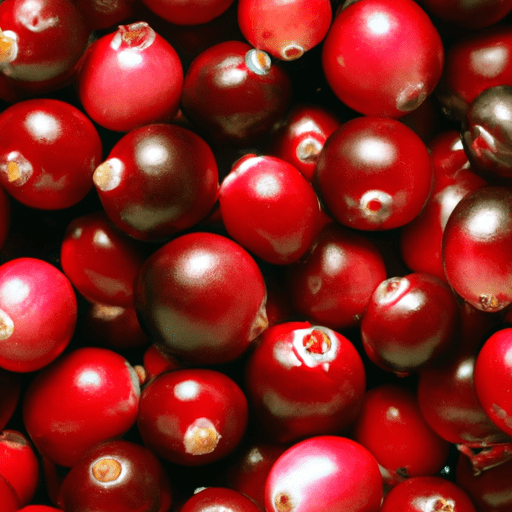The Versatile and Tangy Cranberry: A Culinary Delight
Cranberries, with their vibrant red hue and distinctive tartness, are a versatile fruit that add a burst of flavor to countless dishes. Whether you enjoy them in sauces, baked goods, or beverages, cranberries never fail to leave a lasting impression on your taste buds. In this article, we’ll take a deep dive into the world of cranberries, exploring their taste, common culinary uses, nutritional value, and uncover some fascinating history and facts.
A Taste Explosion in Every Bite
One bite of a cranberry reveals an explosion of tangy, mouth-puckering flavor. The taste can be described as a combination of sweet and sour, with a slight bitterness. This unique combination makes cranberries an exciting addition to both sweet and savory dishes.
Culinary Uses of Cranberries
Sauces and Condiments
One of the most popular uses of cranberries is in the form of tangy cranberry sauce. A staple during Thanksgiving and Christmas, cranberry sauce complements roasted turkey or chicken beautifully, adding a burst of freshness to the rich and savory flavors of the main dish. Cranberry sauce can also be used as a condiment in sandwiches, wraps, and charcuterie boards, enhancing the overall taste and providing a delightful contrast.
Baked Goods
Cranberries are a wonderful addition to baked goods, bringing a burst of tartness and a pop of color to various recipes. From classic cranberry muffins and scones to sweet breads and pies, these vibrant berries elevate the flavor profile, making every bite a delightful experience. The tartness of cranberries often pairs well with a touch of sweetness, creating a perfect balance in desserts.
Beverages
Cranberries are widely used to make refreshing beverages, including juices, cocktails, and mocktails. A tall glass of chilled cranberry juice offers a tangy and invigorating thirst-quenching experience. It’s not just the taste; the bright red color adds a visual appeal, making it an ideal drink for both casual gatherings and fancy occasions.
Nutritional Value of Cranberries
Apart from their delectable taste, cranberries are packed with essential nutrients that contribute to a well-balanced diet. These ruby-red berries are incredibly low in calories and fat, making them a guilt-free addition to your meals. They are also an excellent source of vitamin C, fiber, and antioxidants, which promote a healthy immune system, aid digestion, and fight free radicals that can cause damage to our cells.
Fascinating Facts and History of Cranberries
Cranberries are native to North America and have been an integral part of culinary traditions for centuries. Native Americans used them for various purposes, including medicinal and food preservation.
Did you know that cranberries are one of the few fruits that are native to North America? Native Americans used cranberries in a variety of ways, including as a natural dye for clothing due to their vibrant hue.
Another interesting fact about cranberries is their unique ability to float in water. This characteristic allowed the Native Americans to easily harvest cranberries by hand, which later evolved into the fascinating sight of cranberry farmers flooding their fields during harvest season.
In Conclusion
Cranberries are a culinary delight that brings a burst of tangy flavor to a variety of dishes. Whether in sauces, baked goods, or beverages, these versatile berries add a colorful twist and a delightful taste to countless recipes. Beyond their culinary appeal, cranberries boast numerous health benefits, making them a worthy addition to a balanced diet. So, the next time you reach for cranberries, savor their vibrant taste and appreciate the rich history and versatility of this incredible fruit.
Origin:
- Cranberries are native to North America and have been a part of the region’s indigenous cultures for thousands of years.
- Native Americans used cranberries in traditional medicines, dyes, and food preparations.
Common Uses:
- Cranberries are commonly used in a wide range of culinary preparations, including juices, sauces, jellies, pies, and baked goods.
- Dried cranberries are popular in salads, trail mixes, and granola bars.
- Cranberry sauce is a traditional accompaniment to Thanksgiving meals in the United States.
Nutritional Benefits:
- Cranberries are low in calories and rich in antioxidants, vitamins, and minerals.
- They are a good source of vitamin C, vitamin E, vitamin K, and dietary fiber.
- Cranberries are known for their high content of unique flavonoids called proanthocyanidins, which have been associated with various health benefits.
Unique Properties:
- Cranberries have a slightly tart taste, which is why they are often sweetened or mixed with other fruits when used in recipes.
- They contain natural compounds that have been studied for their potential antibacterial properties, particularly in preventing urinary tract infections.
- Cranberries have a natural buoyancy, allowing them to float in water, making it easier to harvest them from flooded cranberry fields.
Historical Significance:
- European colonists learned about cranberries from Native Americans, who had been using the fruit for centuries.
- In the early 19th century, commercial cranberry cultivation began in the United States, and cranberries became an important industry in regions with suitable climates.
- Cranberry sauce was served to the Union Army during the American Civil War, and the soldiers’ appreciation for the fruit popularized it further.




Use the share button below if you liked it.
It makes me smile, when I see it.